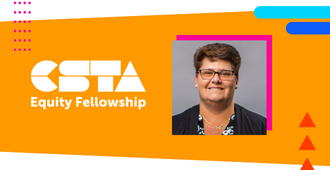
There was a time when I, like many other educators, dreamed of students each having access to a computer. I can remember the first time my school got a laptop cart.
Full Story
There was a time when I, like many other educators, dreamed of students each having access to a computer. I can remember the first time my school got a laptop cart. The thrill of being able to work with wireless connectivity on maybe one or two lessons a month. I was always writing small grants, doing fundraisers, and hoping that one day we might be able to achieve the dream of a 1:1 reality. Oddly enough it was not any of my efforts that made this dream happen, but rather a deadly global pandemic. We all know that by March of 2020 education was now being relegated to the virtual world. As I write these words children are still working online, hybridly, or in-person with devices of their district’s issuing. Americans are now facing a new reality, internet inequality.
The internet has existed as a mechanism to share data since 1989. It has changed our society in many ways and for most was considered a nonessential item until COVID-19. Almost overnight our way of life changed and access to the internet went from a luxury to a necessary resource. Like any resource of value, those in high poverty and rural areas were lacking. The FCC had long relied on self-reporting of internet coverage by service providers, census blocks from 2010, and did not factor in the economic cost of monthly internet usage fees when it calculated that only 6.3% or 21.3 million Americans lacked broadband access (FCC, 2021). Broadband Now and Microsoft argued that this estimate was off by as much as between 20 and 141.7 million (Poon, 2021; Martinez, 2021). In areas where the internet was available it was also noted that areas with higher poverty rates had slower download speeds due to companies not investing in technology upgrades (Martinez, 2021).
With the increased attention drawn to this inequity, America has an opportunity to address a serious technological infrastructure shortcoming. The internet is now a utility and not a luxury. During this pandemic, I have worked in one of our nation’s lowest ranking states for educational performance with one of the nation’s highest rates of poverty. While our state struggled with this new technology inequity we also have started to take steps towards making progress. On February 26, 2021, Louisiana established a department of Broadband Development and Connectivity. Louisiana’s Broadband For Everyone (2021) program’s ambitious goal is a starting point. The intended goal is to:
“Improve both the adoption and availability of broadband service for Louisiana residents by providing universal access to broadband service with minimum committed speed of 25 Megabits per second (Mbps) download and 3 Mbps upload, scalable to up to 100 Mbps download and 100 Mbps upload, for all Louisianans by 2029.”
A unique component of this plan was the inclusion of educators to establish specific goals for education:
- To host regular sessions for stakeholders on broadband developments, technologies, and government actions;
- Promote regional campaigns to increase adoption and utilization of broadband services in unserved and underserved communities;
- Partner with the State Department of Education and school districts to document the homework gap of Louisiana students;
- Devise and disseminate a core set of best practices for regions, districts, and communities to undertake in closing the gap (i.e. mobile service options, device lending) by July 1, 2020;
- Identify and promote digital literacy and online security/safety programs to populations of need, businesses, and agricultural producers; and
- Partner with Louisiana’s Library System to promote their resources, technology, and opportunities for community outreach.
I write about these actions not to sing the praises of one state, but to ask fellow CS educators, stakeholders, and equity allies if you know what your state’s plan is?
The educational, psychological, and sociological impacts of COVID-19 will no doubt be studied for the next few decades. The global pandemic has yet to officially end and may yet cause further disruptions in our lives. The immediate lessons society has learned about the need to increase access to the internet, break down socioeconomic barriers to the internet, increase awareness of inequities in access, acknowledge the need for infrastructure improvements, and actualize the access of information as a human right for all are now most evident. It is often a cliche that history is doomed to repeat itself. If we are to look to history for guidance then we must acknowledge that after the bubonic plague humanity created our first cultural renaissance. I posit, as COVID-19 is passing, humanity must now embrace a new computer science renaissance with internet accessibility, devices, and reduced knowledge inequity.
Sources
FCC, Federal Communications Commission, Internet Access Service Reports, Retrieved from https://www.fcc.gov/internet-access-services-reports; April 18, 2021
Louisiana Broadband for Everyone, Retrieved from https://gov.louisiana.gov/assets/docs/Broadband-for-Everyone-in-Louisiana-(BEL)-Plan-FINAL.pdf; April 18, 2021
Martinez, E. The COVID-19 crisis highlights the costs of the U.S. digital divide, Retrieved from https://themarkup.org/ask-the-markup/2020/03/26/how-many-americans-lack-high-speed-internet; April 18, 2021
Poon, L. The Federal Communications Commission says 21 million Americans lack high-speed internet access, but a new report says the actual figure is double that., Retrieved from https://www.bloomberg.com/news/articles/2020-02-19/where-the-u-s-underestimates-the-digital-divide; April 18, 2021
About the Author
 Dr. John Underwood is currently a STEM Specialist for K-12 programs at the Louisiana Department of Education. He has taught middle and high school since 2003 and helped to create a research partnership to develop statewide STEM CS pathways for 7-12 students in Louisiana. His research interests include increasing the equity in and access to high-quality computer science education for all students. John is also working to establish rigorous and high-quality professional development to help novice K-12 teachers gain content and pedagogical CS knowledge. John has aided in developing Louisiana’s first Career Technical Education pathway for computer science. He is working with an NSF and EIR grant to make a 7-12 course pathway accessible to all schools in his state.
Dr. John Underwood is currently a STEM Specialist for K-12 programs at the Louisiana Department of Education. He has taught middle and high school since 2003 and helped to create a research partnership to develop statewide STEM CS pathways for 7-12 students in Louisiana. His research interests include increasing the equity in and access to high-quality computer science education for all students. John is also working to establish rigorous and high-quality professional development to help novice K-12 teachers gain content and pedagogical CS knowledge. John has aided in developing Louisiana’s first Career Technical Education pathway for computer science. He is working with an NSF and EIR grant to make a 7-12 course pathway accessible to all schools in his state.



